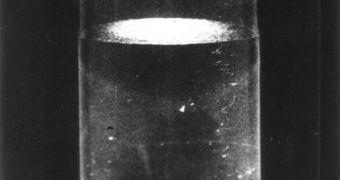Massachusetts Institute of Technology (MIT) investigators say that in a recent study they were able to observe a gas transitioning into a superfluid. The latter is a state of matter in which particles flow past each other without experiencing any kind of friction.
This elusive phase transition is a more advanced form of a simpler transition, the one water makes from liquid to gas when boiled. The result is a steamy gas that can be seen with the naked eye. The difference between the two transformation is that water vapors experience friction.
In addition to observing the interesting transition, investigators were also able to gain a deeper understanding of the superconductivity of electrons in metals. This could have significant implications for researchers studying high-temperature superconductors.
These materials hold great promise towards innovating the field of energy efficiency, since they provide a medium for electrons to pass through without experiencing any obstacles in their path. Getting materials to become superconducting is, however, very difficult at this point.
Details of the research effort were published in last week's online issue of the top journal Science. The research group was led by MIT assistant professor of physics Martin Zwierlein, and focused its analysis on an isotope of the chemical element lithium.
The reason why this particular isotope was selected is because it displays an odd number of electrons, protons and neutrons; these are collectively known as fermions. In order for them to become superfluid, they need to hook up in pairs.
Electrons, for instance, form Cooper pairs, and this is what allows them to flow past each other without experiencing any resistance. The same thing needs to happen with all the other fermions as well.
What the MIT researchers had to do in order to observe the transition from fermion pairs to single, unpaired atoms, was to confine the lithium gas in an atom trap. In theory, the transition should be accompanied by significant change in gas pressure, density and energy.
After the gas was trapped, researchers cooled it almost to absolute zero, and observed how a superfluidic arrangement of atom pairs formed in the center of the trap. This structure was surrounded by normal, unpaired atoms.

 14 DAY TRIAL //
14 DAY TRIAL //